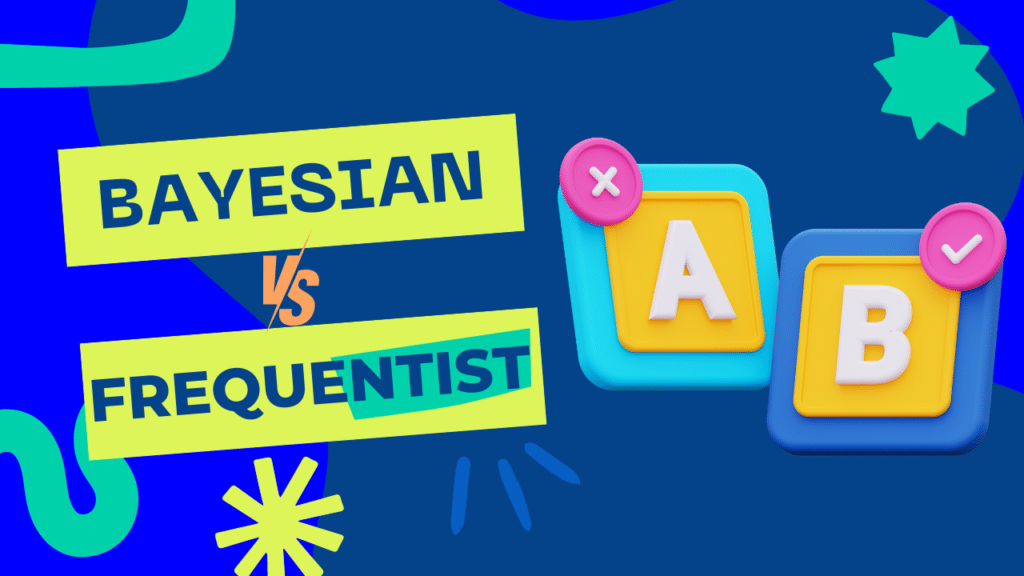Psychology is the “secret sauce” of conversion rate optimization.
You can use all the right design elements, the right copy, and the right testing tactics, but unless you truly understand user psychology, you will struggle to persuade users.
User psychology tells you what customers actually care about at a primal level. Master this and you will see happier users and better margins.
In this post, We’ll share 4 proven principles of psychology to help you increase conversion rates.
1. Take advantage of loss aversion theory
Loss aversion theory says that people would rather avoid a loss than reap a reward. When it was first described, it was used as an explanation for the “Endowment effect” – that people ascribe higher value to things they own than things they do not
In simple words, loss aversion means that people will fight harder to prevent a loss than to gain a reward.
Perhaps the most common example of this can be seen in the casinos around the world. People first losing at the games and then trying to make up for the losses.
How to use it
On your website, understand that people will respond better if you tell them what they’re going to miss out on instead of benefits they stand to gain.
A free gift feels more tangible than a discount, making customers feel like they scored a deal with their decision.
For instance, offering free shipping and returns is one of the best ways to put the loss aversion theory into practice. Customers would rather get a “free” gift (in this case, shipping) than spend $5 on shipping.
For example, Asos clearly mentions its free shipping policies right at the center of its homepage:
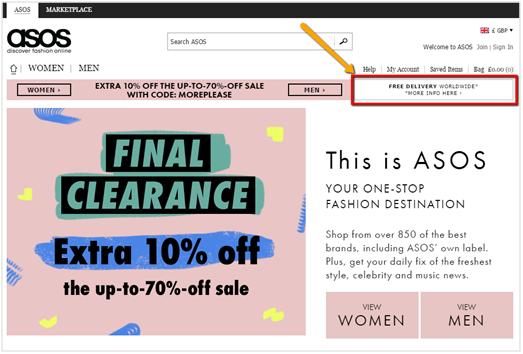
When you click this link, Asos shows you exactly how much you need to shop for to get free shipping:
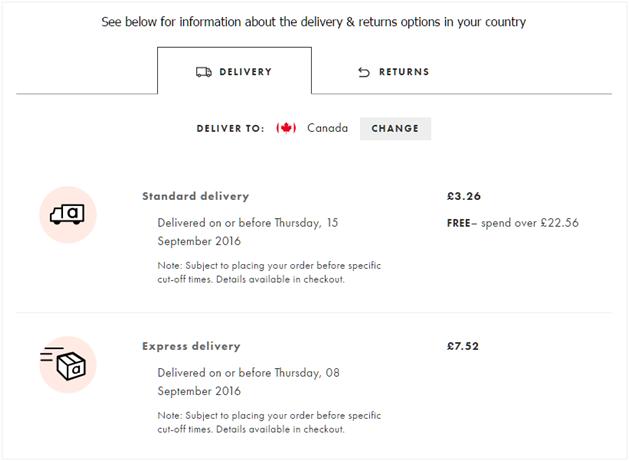
In psychology speak, this is how Asos triggers loss aversion.
2. Use FoMO (Fear of Missing Out)
When people think they might miss out on something, they immediately act to get it.
Psychologists call this phenomenon Fear of Missing Out aka FoMO.
FoMO is essentially anxiety that an exciting or interesting event may currently be happening elsewhere. It’s closely related to scarcity and social proof – if you are not a part of the exciting event, you don’t have social proof to show that you are knowledgeable or in-tune with current events.
In a study on “scarcity effect” conducted in 1975, researchers put 10 cookies in one jar and 2 of the same cookies into another jar. Participants were then asked to rate the chocolate chip cookies.
Unsurprisingly, participants gave higher ratings to the cookies in two-cookie jar.
This shows people value items that come in limited quantities. “Act now while supplies last” is a great way to persuade customers.
How to use it
On your ecommerce store put a timeline on your products and make it look like customers might lose out if they buy the product right away.
For example, wine.woot.com make user of time limits to encourage purchases. They make one special offer per day. Once the product is timed out, it’s gone forever.
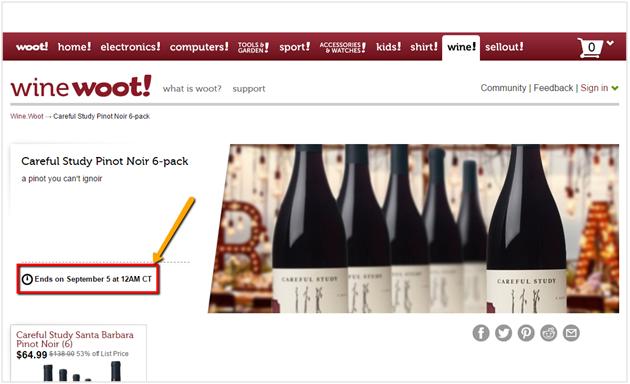
Here’s another example from Hotels.com. Hotels.com uses FoMO by showing the number of rooms left at a particular hotel. Users might think that since there are only limited rooms left, they are missing out on an exciting deal.

3. Give customers instant satisfaction
The brain lights up when people picture instant rewards.
Several Magnetic Resonance Imaging (MRI) studies have shown that our frontal cortex – the part of the brain responsible for reward and attention – is highly active when we think of waiting for something.
You need to remind your customers that your product can solve their problems fast. Focus on quick arrivals, fast shipping and instant gratification to appeal to your customers and give them instant gratification.
How to use it
In your offer copy, use words like “Now”, “Fast”, “Immediate”, “On the spot” etc.
This can apply to page headlines, such as this one from MensFitness.com:
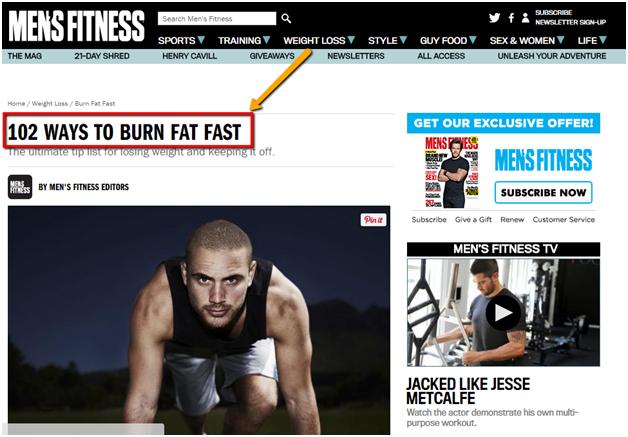
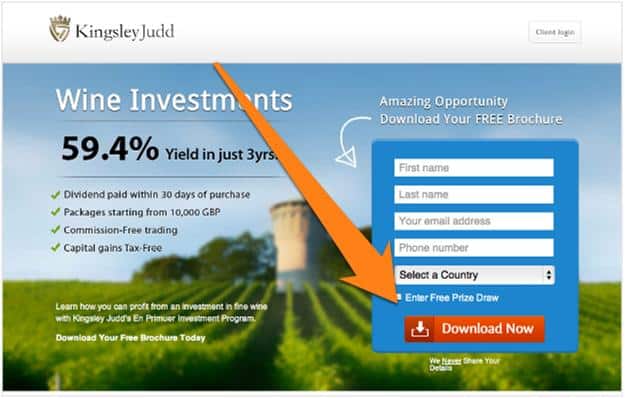
And even to Twitter customer support queries:
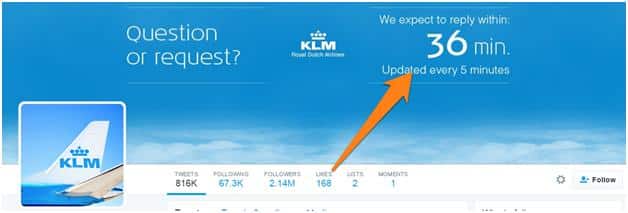
Assure customers that you are there for them and that you will give them what they want as quickly as possible.
4. Use the principle of reciprocity
In 2002, researchers found that waiters could increase their tips with the psychology of reciprocity. Tips increased 3 percent when customers were offered after-dinner mints.
But when the waiters were asked to pause, look at the customers and tell them the mint was specially for them – tips went up by 20 percent!
This is an example of the principle of reciprocity (one of Robert Cialdini’s 6 principles of persuasion) – that we want to give back to people when they do us a favor.
In the above case, the diners tipped extra without being asked by the waiters because they wanted to return the favor.
How to use it
Offer something to your visitors for free so that they feel indebted to you.
One of the best ways to put reciprocity to work is to through content marketing.
By blogging you can give away value for free in the form of blog posts. Your focus should be to genuinely give value to your readers.
The best example of this is MrPorter.com. This site started out as a fashion magazine and has now branched into a full-fledged E-commerce store. It still publishes some of the best men’s lifestyle content online, including in-depth interviews with celebrities, fashion guides, etc.
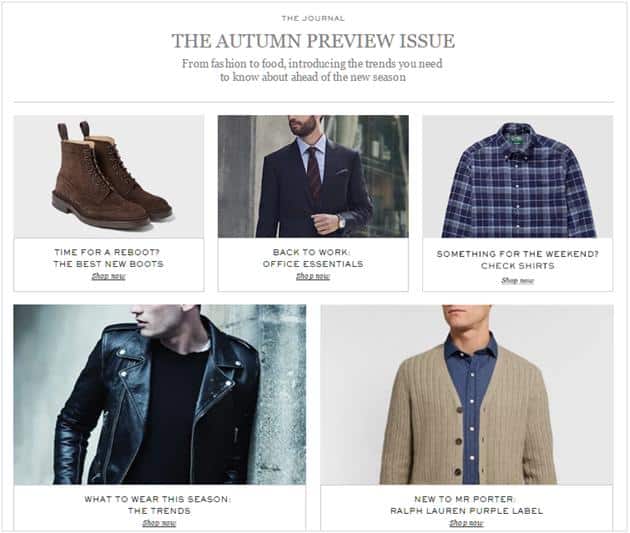
Another great example is Baxtton magazine. Like MrPorter, this site started out as a platform to share interesting products and gadgets. Instead of directing customers to retailers, Baxtton now offers readers a curated selection of products featured on the blog.
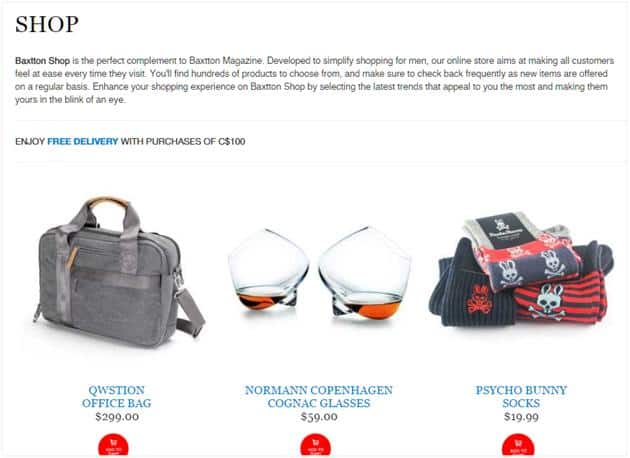
In other words: by giving customers something (in this case, content), Baxtton makes its products more attractive.
Over to You
Understanding user psychology is akin to gaining conversion rate optimization superpowers. Once you know what triggers action and influences human behavior, you can design much better converting experiences.
Use the four tips shown above to start understanding user psychology and implementing it on your site.


